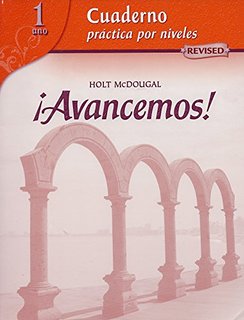
All Solutions
Page 38: Leer A
Reading with comprehension.
Read through the text twice to understand it in full. Then head over to the next section and decide whether the statements are true (cierto; C) or false (falso; F). Below, you will find an analysis of each statement.
Take a close look at the third sentence, where it says that Rocío is “estudiosa”. This means the contrary of what the statement says, thus it is a false statement.
The next sentence in the text describes Mr. Cruz. You will notice that is says that he is a bit old, which implies that this statement is false.
Even though there is no mention that Nora and Lidia are friends of Rocío, it does say that the two are intelligent. This leads to believe that this statement is true.
Take a look at rows three and four. This is where Norberto is introduced as Rocío’s brother. Immediately afterwards, it says that he is short, thus is statement is false.
This statement is true, and it is covered in the last sentence of the text.
You may refer to the below solutions for further guidance.
2. F
3. C
4. F
5. C
The purpose of this exercise is to practise writing in Spanish.
You are given four personal questions. They address either a current or a permanent condition, which is why you will respond in the present tense. Given the personal nature of these questions, only use the below examples as a reference of how your responses might look like.
1.A. Sí, tengo el pelo castaño.
1.B. No, no tengo el pelo castaño. Soy rubio.
2. Mis amigos son inteligentes y atléticos.
3.A. Sí, soy un chico organizado.
3.B. No, no soy un chico organizado.
4. Ruth es una chica muy inteligente y amable. Es alta y pelirroja, y tiene los ojos azules. Es atlética y organizada, pero poco estudiosa.

